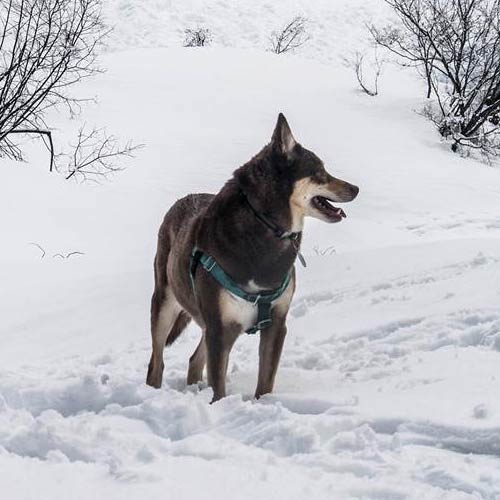
As the story went among the Sami people, two dogs were on a hill watching people trying to round up a herd of uncooperative reindeer. The humans were running around the reindeer and yelling directions, but with little effect. It was clear that the reindeer were successfully eluding the humans and getting the upper “hoof,” so to speak. One dog tells the other one, “Let’s go help these [silly] humans. We can gather the herd so much better than they can,” and they did. From that point on, Sami herdsmen got an indispensable helper in the Lapinporokoira, or Lapponian Herder.
Many scientists wince at the term, “missing link,” initially an unscientific idiom used to describe transitional fossils. In popular culture, it can also be used to describe a gap between similar, but not exact things. “Missing link” comes to mind when learning more about these dogs, a breed some experts feel is a true intermediary between the nordic and the herding dog.
A spitz-like herder of extraordinary durability and endurance (it’s said these dogs have the stamina to run 60 miles a day in deep snow), the Lapponian Herder originated in Finland where generations upon generations of Lapps used the dogs to herd reindeer. When wild reindeer herds slowly disappeared and snowmobiles entered the scene, a different type of dog was need to work herds of domesticated reindeer. It was created by crossing Finnish Lapphunds with German Shepherd Dogs and working Collies. The resulting dogs were once grouped with the Finnish Lapphund as a breed, but in 1966, the Lapponian Herder was separated into its own breed, in part because of the efforts of the then chairman of the Finnish Kennel Club, Olli Korhonen who wrote the breed standard.
Today, the Lapponian Herder can still be found with the reindeer herds in Lappland, but its fine temperament has made it a popular companion dog, as well. The breed recognized by the United Kennel Club in 2006 , and in 2017, it was accepted to the AKC’s Foundation Stock Service program.
Image from the AKC breed page shared with consent.
